Mergers are about Integration (Hint: use EOS)
Mergers are about integration. They are not about finding the partner company, nor affecting the transaction, however complicated either of these may be. Most mergers fail due to a lack of integration after the merger. The two companies hold on to their own identities far too long and miss the opportunity to create a future together fast. This can be a problem, as a lot of energy is wasted and some of the best employees may leave and competitors cherry pick good customers.
Coming Together
The key of a merger is to bring the minds and hearts of the members of the new leadership together as soon as possible. The Entrepreneurial Operating System is a great tool to do that, as it provides a framework for the leadership team to define the future organization, articulate the core values the best people in most companies live by, and set these as the expectation for the new organization. The leadership team will bond over the process of picking major initiatives (“Rocks”) to execute in the next quarter and while defining the core focus and strategic pillars of the new company.
The key is to engage the the merger leadership team in a productive process, distracting them of the emotional challenges of the merger that they have to face anyway. EOS helps the team bond and become cohesive by prioritizing and addressing the most important issues in the new organization.
I am currently working with a merging leadership team, which after only two meetings have started addressing (read: streamlining) the organization and braking down silos between the companies and departments. The next step will be to challenge members to feel ownership for and contribute to solving all the company level challenges and decisions, whether in their area or not. This stuff really works.
Check out my video for more juice on the topic.
Work on your Traction and talk soon!
Steve
